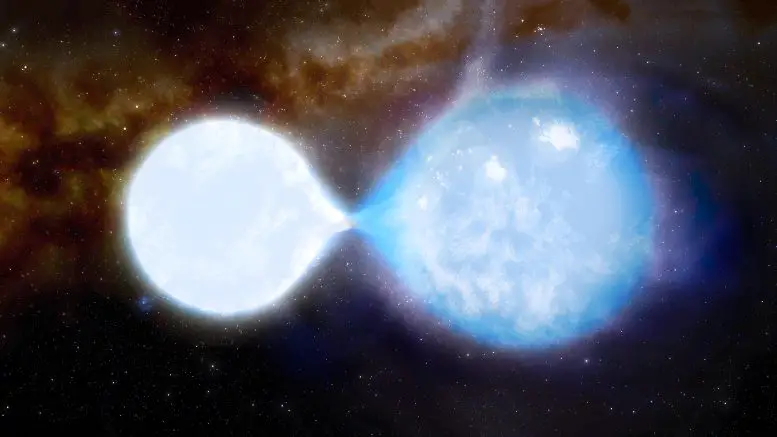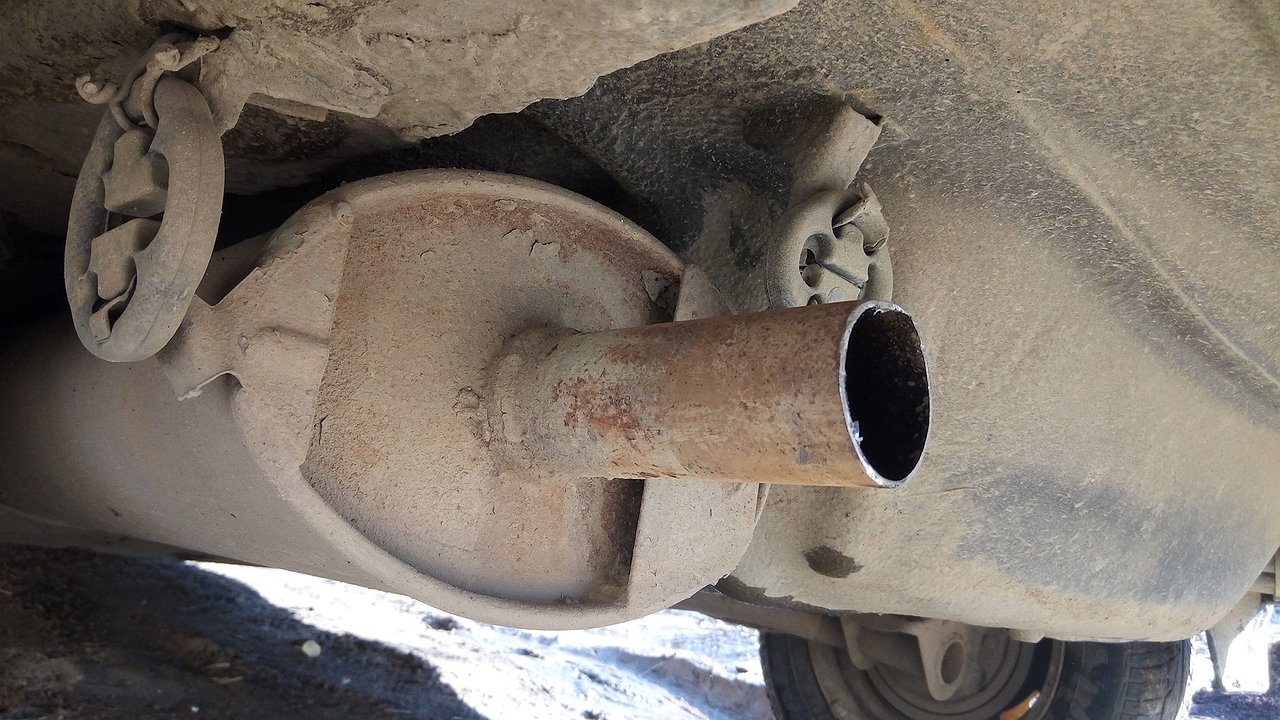Two massive stars in a nearby galaxy are destined to become black holes that will eventually collide, creating ripples in the fabric of space-time, according to a new study by researchers from University College London and the University of Potsdam. Research accepted for journal publication Astronomy and AstrophysicsHe looked at a known binary star (two stars orbiting a common center of gravity) by analyzing starlight from a number of ground-based and space-based telescopes.
The researchers found that stars in a nearby dwarf galaxy called the Small Magellanic Cloud are partially in contact, with one star “feeding” the other and exchanging materials with each other. They orbit each other every three days and are the largest touching stars observed (known as contact pairs).
Comparing the results of their observations with theoretical models of binary star evolution, they found that in the best model, the currently fed star would become a black hole and feed off its companion star. The surviving star will soon become a black hole.
These black holes will form in just a few million years, but will then spin against each other for billions of years before colliding with enough force to create gravitational waves – ripples in the fabric of space-time – that can then be theoretically detected by instruments on Earth. .
“With the gravitational wave detectors Virgo and LIGO, dozens of black hole mergers have been detected over the past few years,” said Matthew Rickard (UCL Physics & Astronomy), a graduate student and lead author of the study. For now, however, we have yet to observe stars predicted to collapse into black holes of this size and coalesce on timescales shorter than the age of the universe, or even roughly comparable to it.
“Our best model predicts that these stars will develop into black holes after 18 billion years. Finding stars in this evolutionary path so close to our own Milky Way galaxy gives us a great opportunity to learn more about how these binary black holes formed.”
Co-author Daniel Pauli, a doctoral student at the University of Potsdam, said: “This binary star is the largest binary contact binary system ever observed. The smaller, brighter and hotter star, 32 times the mass of the Sun, is currently increasing its mass. It’s losing to its larger friend, which is 55 times our Sun.
The black holes that astronomers see merging today formed billions of years ago, when there was less iron and other heavy elements in the universe. As the universe aged, the proportion of these heavy elements increased, making black holes less likely to merge. This is because stars with a higher percentage of heavy elements have stronger winds and break apart faster.
In a quirk of nature, the well-studied Small Magellanic Cloud, located about 210,000 light-years from Earth, contains about one-seventh the amount of iron and other heavy metals in our Milky Way galaxy. In this respect, it imitates the conditions of the distant past of the universe. But unlike older, more distant galaxies, it’s close enough that astronomers can measure the properties of single and binary stars.
In their study, the researchers measured different bands of light from the binary star (spectroscopic analysis) using data obtained over several time periods by instruments on NASA’s Hubble Space Telescope (HST) and the Multi-Unit Spectroscopic Explorer (MUSE). At ESO’s Very Large Telescope in Chile, among other telescopes, from ultraviolet to optical and near-infrared wavelengths.
With this data, the team was able to calculate the radial velocities of the stars, that is, their mass, luminosity, temperature and orbit, as well as their motion towards or away from us. They then compared these parameters with the best evolutionary model.
Their spectroscopic analysis showed that much of the smaller star’s outer shell was being stripped away by its larger companion. They also noticed that the radii of both stars exceeded the Roche lobes; this confirmed that some of the smaller star’s material was overflowing and moving towards the companion star.
Speaking about the future evolution of stars, Rickard explained: “First, a smaller star will become a black hole only after 700,000 years, in a spectacular explosion called a supernova, or it can be so large that it turns into a black hole. external non-explosion hole.
“They’ll be restless neighbors for about three million years until they begin to increase their mass by taking revenge on their first black hole companion.”
“After just 200,000 years, in just 200,000 years, at an astronomical moment, the companion star will also collapse into a black hole. These two massive stars will continue to orbit each other, rotating every few days for billions of years.
“They will gradually lose this orbital energy through the emission of gravitational waves until they orbit each other every few seconds and eventually merge into a massive release of energy via gravitational waves after 18 billion years.”













